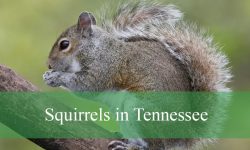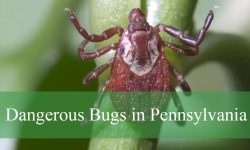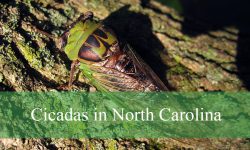The diverse habitats across California, from lush coastal redwood forests to the dry deserts of the south, are home to an impressive variety of millipedes. These many-legged creatures play an essential role in nature by breaking down fallen leaves and decaying organic matter, enriching the soil and supporting healthy ecosystems. Although their name suggests a thousand legs, most species have fewer than four hundred and move slowly and gracefully through the forest floor.
Millipedes in this region show great diversity in both appearance and behavior. Some species prefer the cool, moist woodlands of the north, while others have adapted to survive in sunbaked desert landscapes. Identifying them often involves observing their color patterns, body structure, and preferred habitats.
The following guide introduces some of the most fascinating types of millipedes found in California, complete with pictures and identification details to help you recognize these remarkable decomposers in the wild.
Different Types of Millipedes Found in California
California Giant Millipede (Tylobolus species)
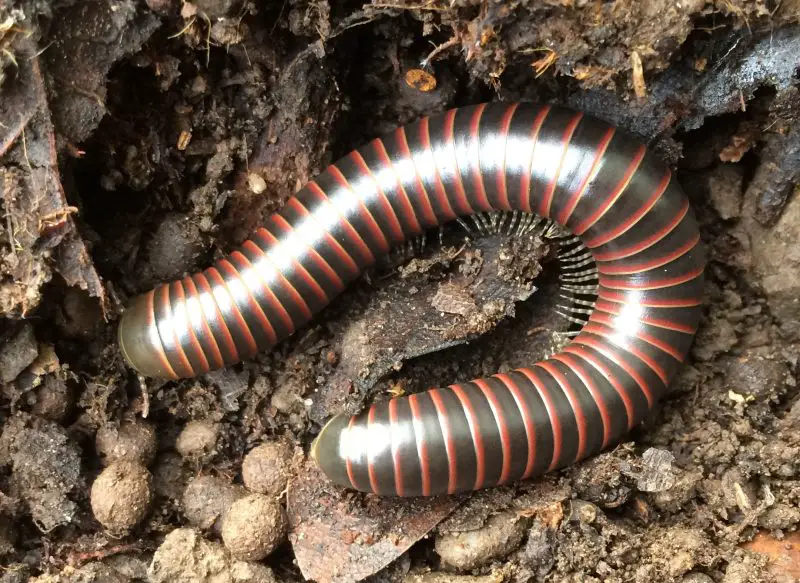
The California Giant Millipede is one of the largest and most recognizable millipedes native to the western United States. Its cylindrical body is typically dark brown to black, sometimes with reddish or coppery tones between the segment joints. Adults usually grow between 3 and 4 inches in length and can appear glossy or matte depending on humidity. The body is composed of dozens of rounded segments, each with two pairs of legs that move in coordinated waves, giving the millipede its smooth, gliding motion through leaf litter and forest debris.
This species is slow-moving and non-aggressive, relying on defense rather than speed to survive. When threatened, it curls tightly into a spiral, protecting its softer underside, and may secrete a mild defensive fluid with an earthy or musky odor. The secretion is harmless to humans but discourages small predators such as birds, frogs, and rodents. Its calm nature and deliberate movement make it one of the easiest millipedes to observe in the wild, especially after rain when it ventures onto trails and forest paths in search of food.
Feeding primarily on decaying leaves, wood, and other plant material, the California Giant Millipede plays an important ecological role as a decomposer. It helps recycle organic matter into nutrient-rich soil, supporting plant growth and maintaining healthy forest ecosystems. This species prefers cool, damp environments with abundant shelter, often living beneath fallen logs, stones, or thick layers of leaf litter. It is mostly nocturnal, emerging at night or during periods of high humidity to feed and explore.
The California Giant Millipede can be found across Northern and Central California, particularly in redwood forests, oak woodlands, and along the coastal ranges. Populations are especially common in areas such as the Santa Cruz Mountains, Mendocino forests, and the Sierra Nevada foothills. During dry summer months, these millipedes burrow deeper into the soil to maintain moisture. Their presence is a sign of a healthy forest floor, where moisture, organic matter, and biodiversity thrive together.
Sierra Millipede (Harpaphe haydeniana)
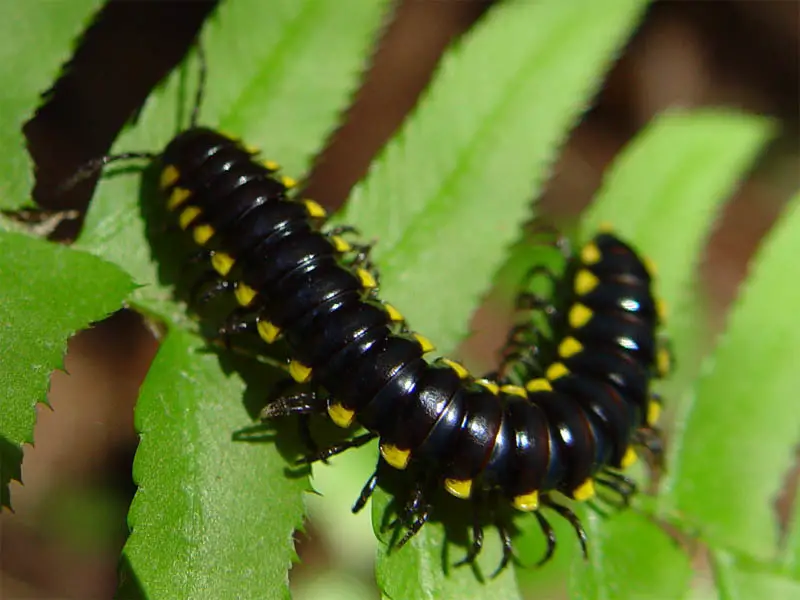
The Sierra Millipede, more commonly known as the Yellow-spotted Millipede, is one of California’s most visually striking millipede species. Its body is sleek and black, with bright yellow or orange spots marking each segment, forming a vivid contrast that serves as a natural warning to predators. The body is slightly flattened compared to cylindrical millipedes, and individuals can reach up to 2 inches in length. This combination of size and color makes the species easy to identify among leaf litter or on damp forest trails.
This species exhibits a fascinating defense mechanism that distinguishes it from many other millipedes. When threatened, it releases small amounts of hydrogen cyanide from specialized glands located near its segment joints. Although toxic to small predators such as ants or birds, the chemical poses no serious risk to humans unless the millipede is crushed or handled excessively. Its warning coloration, known as aposematism, helps prevent attacks before the chemical defense is even used.
The Sierra Millipede is primarily nocturnal, becoming active during cool, moist conditions, especially after rainfall. It feeds on decomposing wood and plant debris, often found under fallen logs, stones, or thick leaf litter. During the daytime, it hides in dark crevices or under bark to avoid drying out. Its movement is slow and deliberate, allowing it to navigate through the complex forest floor environment efficiently.
This species inhabits redwood forests, mixed hardwood forests, and damp coastal woodlands stretching from Mendocino County southward to the Sierra Nevada foothills. It prefers shaded areas with consistent moisture and a thick layer of decaying organic matter. The Sierra Millipede is an important part of the nutrient recycling process in these ecosystems, contributing to soil fertility and forest health by breaking down tough plant material.
Desert Millipede (Orthoporus ornatus)
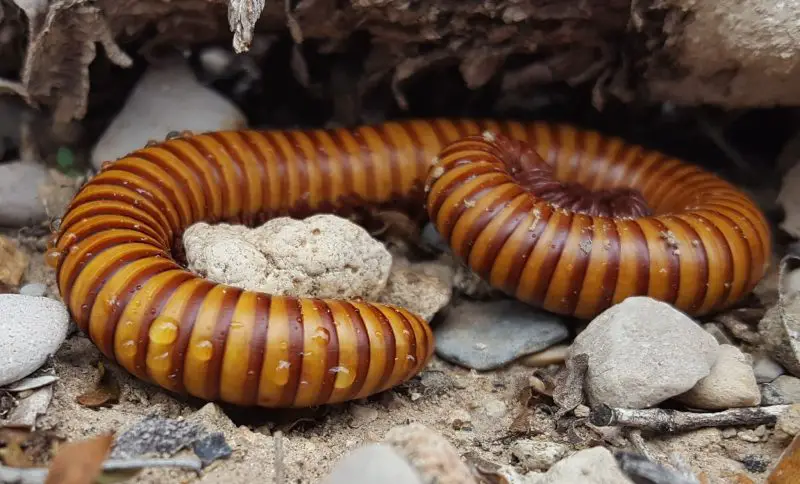
The Desert Millipede is one of the largest millipede species in California, often growing up to 6 inches long. It has a long, smooth, and cylindrical body that ranges in color from light brown to tan, sometimes with faint darker bands encircling the segments. Its polished exoskeleton helps minimize water loss, an essential adaptation for survival in dry environments. The legs are numerous but short, moving in a coordinated wave-like pattern that propels the millipede efficiently over sandy soil.
This species is well adapted to the harsh conditions of the desert. It is primarily nocturnal and becomes most active during periods of high humidity or immediately after rainfall when the desert floor is damp. During the hottest and driest parts of the year, the Desert Millipede retreats into deep burrows, where it remains in a state of dormancy to conserve moisture. It feeds primarily on decaying desert vegetation, including fallen mesquite leaves and cactus debris, which it helps return to the soil as organic matter.
Behaviorally, the Desert Millipede is slow and non-aggressive, coiling up tightly when threatened to protect its vulnerable underside. It may also secrete a mild defensive fluid with a slightly musky odor to deter predators such as lizards, birds, and small mammals. Unlike other millipedes, this species can tolerate greater temperature extremes, thanks to its waxy outer cuticle that reduces water evaporation. It often emerges from the ground after summer monsoon rains, making it easier to observe in open desert habitats.
The Desert Millipede is widely distributed across Southern California, particularly in the Mojave and Colorado Deserts. It is often encountered in Joshua Tree National Park, Anza-Borrego Desert State Park, and surrounding arid regions. It inhabits sandy washes, rocky outcrops, and desert grasslands, where it burrows into loose soil. Despite the challenging environment, this millipede thrives as an important decomposer, maintaining soil health and nutrient cycling in desert ecosystems.
California Flat-Backed Millipede (Xystocheir dissecta)
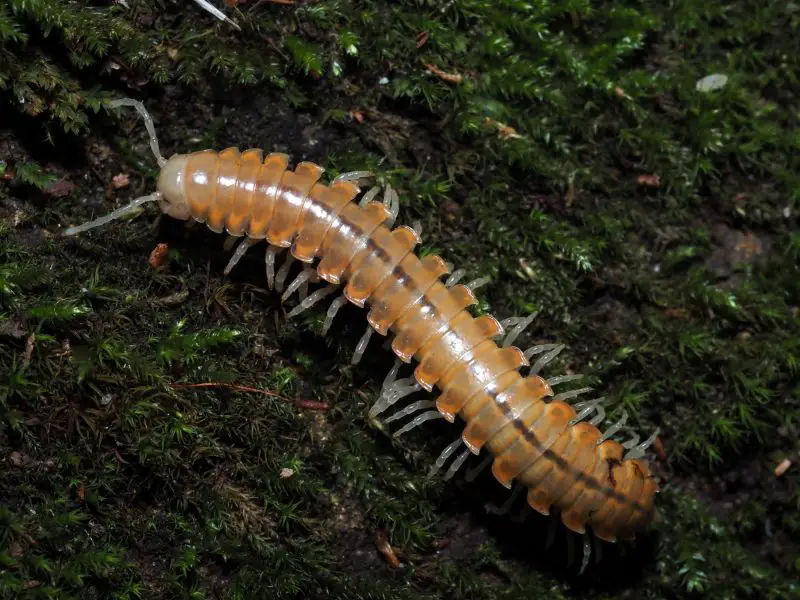
The California Flat-Backed Millipede is a distinctive species native to the coastal and inland forests of California. It has a dark brown to nearly black body with lighter margins along each segment, creating a faint striped appearance when viewed from above. Its flattened body shape sets it apart from cylindrical millipedes, measuring about 1.5 to 2 inches in length. The flattened profile allows it to move easily through narrow gaps in bark, soil, or decomposing wood, making it highly adapted to life beneath forest debris.
This millipede’s body consists of numerous rigid plates, each slightly overlapping the next, giving it a sturdy and flexible appearance. The legs are short and well-suited for navigating compact spaces under the forest floor. Its exoskeleton is matte rather than shiny, helping it blend seamlessly into the dark, damp environments it inhabits. When threatened, it may curl into a partial spiral, though it relies more on concealment than chemical defense to avoid predators.
The California Flat-Backed Millipede feeds primarily on decaying wood, plant litter, and fungi, playing a key role in the decomposition process. It is most active during nighttime and cooler hours when humidity levels are higher. During the day, it remains hidden under bark, stones, or fallen logs, where it avoids desiccation. Its flattened body enables it to exploit microhabitats unavailable to other millipedes, particularly under dense layers of decomposing material.
This species is most frequently found in coastal and inland forests from Marin County down to Monterey. It thrives in redwood groves, oak woodlands, and shaded riparian zones where the soil remains moist year-round. It contributes significantly to nutrient recycling in these ecosystems and serves as prey for small amphibians and ground-dwelling insects. Its subtle appearance and reclusive habits make it less commonly observed than other species, but it is an important part of California’s forest biodiversity.
Paeromopus angusticeps (Paeromopus millipede)
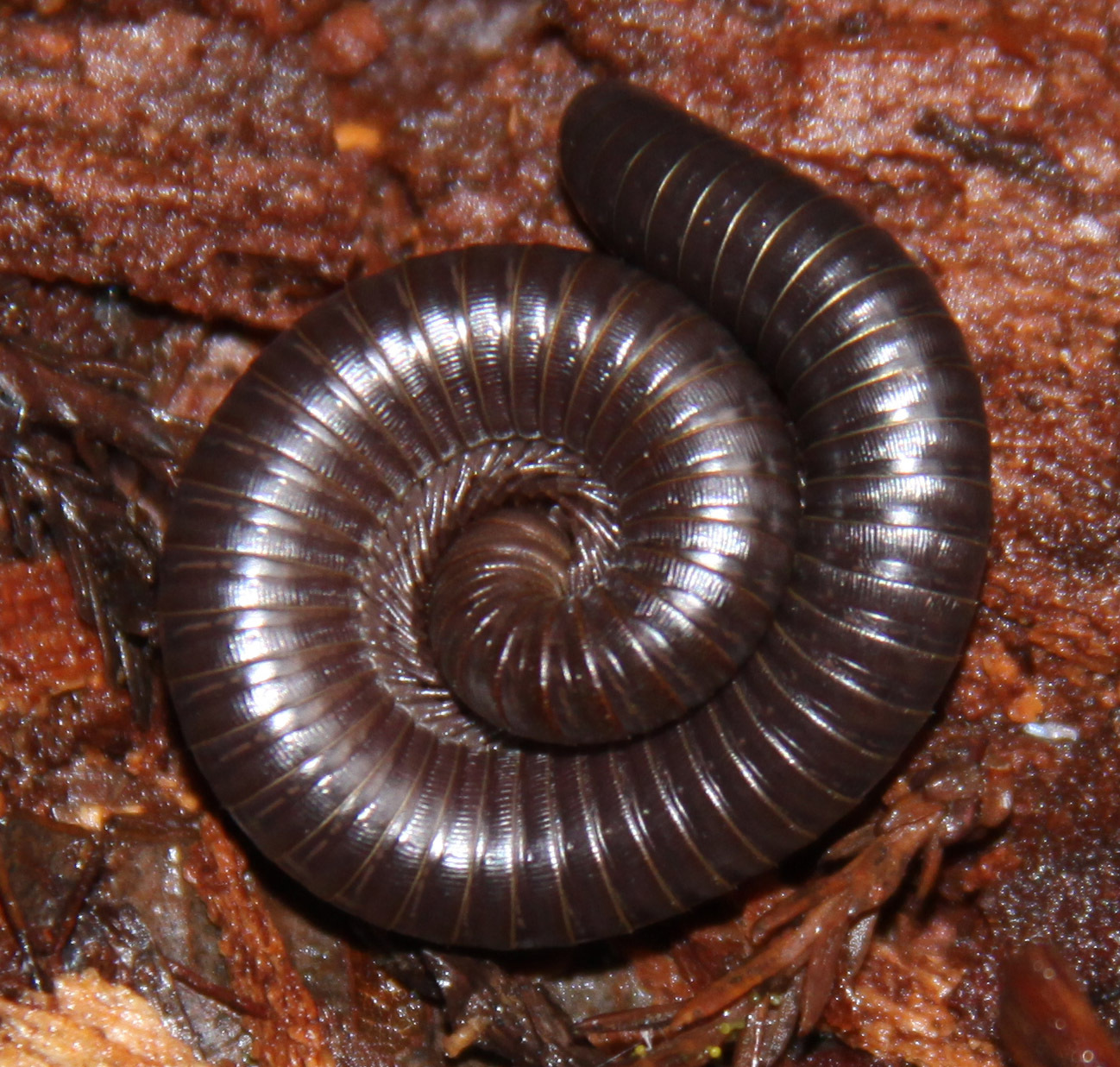
Paeromopus angusticeps is a large, native cylindrical millipede notable for its length and bold banding. Adults commonly exceed 4 inches (10 cm) and can have up to ~80 body segments, with alternating dark and lighter bands along a black or blue-black background. The body segments show fine longitudinal striations, and the legs are relatively long compared with many other California millipedes, so it appears more “snake-like” when it moves.
This species is slow-moving and non-aggressive; when disturbed it coils up to protect its softer underside. It uses size and curling as primary defenses rather than strong chemical sprays common in some flat-backed millipedes, though it can still secrete mild deterrents like other millipedes. Observers often notice Paeromopus on the ground at night or after rain, when activity and surface movement increase.
Ecologically, P. angusticeps is an important decomposer. It feeds on decaying leaves, wood and other plant detritus, breaking tough plant material into finer particles that fungi and microbes further process—thereby returning nutrients to forest soils. Its large size allows it to consume and process substantial amounts of litter compared with smaller species.
In California this species has one of the widest ranges among Paeromopus: from the central coast (Monterey/San Francisco Bay region) north into the Coast Ranges and up into parts of the Sierra Nevada and Cascades. There are recognized subspecies (or regional races) with slightly different distributions, and records show it is common in moist, forested habitats with abundant leaf litter and fallen wood.
Redwood Forest Millipede (Xystocheir species)
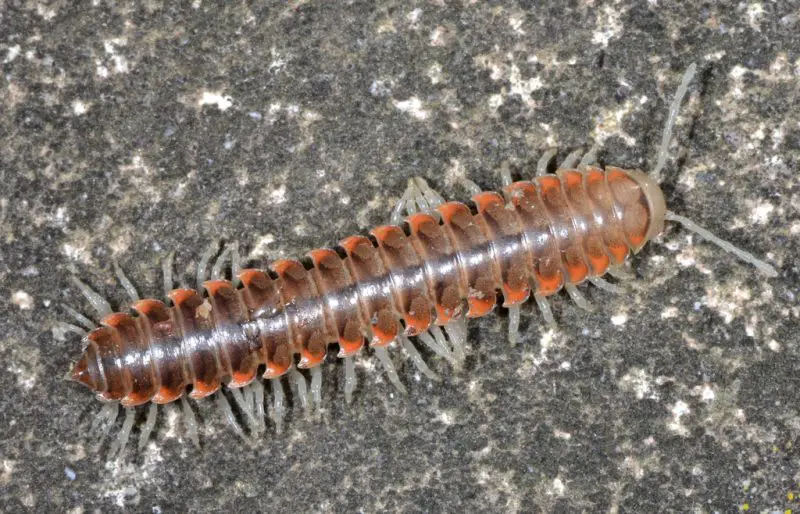
The Redwood Forest Millipede is a native inhabitant of California’s cool, damp coastal forests. Belonging to the genus Xystocheir, this species varies in coloration from deep brown to reddish or pinkish tones, often with lighter margins along each segment. Its flattened body design gives it a broad, segmented appearance that helps distinguish it from the rounder, cylindrical millipedes of the genus Tylobolus. Adults typically measure between 1.5 and 2 inches in length and have a matte, slightly textured surface that blends perfectly with the reddish-brown tones of decaying forest litter.
Unlike shiny, smooth-bodied millipedes of arid regions, the Redwood Forest Millipede’s flattened shape allows it to slip easily through the narrow spaces beneath bark, moss, and decomposing logs. Its numerous short legs move in coordinated waves, carrying it steadily across damp ground in search of decaying leaves and fungal growths. This species is slow-moving and avoids open, dry areas, preferring to stay close to the moist shelter of redwood duff and shaded understory layers. Its muted but warm coloration provides excellent camouflage against the forest floor.
When disturbed, the Redwood Forest Millipede curls its body tightly into a spiral, hiding its more vulnerable underside. Some individuals may secrete a mild defensive compound that produces a faint earthy or musky odor. The secretion is harmless to humans but deters small predators such as amphibians, shrews, or ground beetles. Despite its reclusive nature, this millipede plays an essential role in its environment by decomposing plant litter, recycling nutrients, and contributing to the fertile humus layer that supports California’s towering redwoods.
This species is most commonly found in the redwood forests of Northern California, extending southward through the coastal ranges to Monterey County. It thrives in moist microhabitats where fog, shade, and organic material combine to create stable humidity. Typical hiding places include beneath fallen bark, inside rotting logs, or under dense moss mats near streams.
Greenhouse Millipede (Oxidus gracilis)
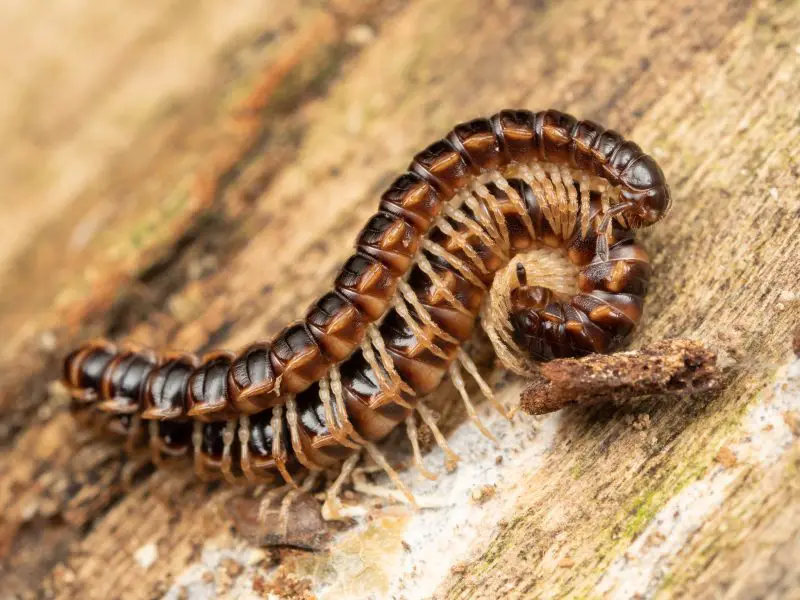
The Greenhouse Millipede is a small, slender species originally native to Southeast Asia but now found in many parts of the world, including California. It was introduced through international plant trade and has become one of the most common non-native millipedes in urban and suburban environments. Adults measure about 0.8 to 1 inch in length, with a long, cylindrical body that is dark brown to nearly black, featuring lighter tan or gray stripes along the sides. The surface of its body is smooth and shiny, giving it a polished appearance, especially when illuminated by light in damp environments.
This species is often mistaken for native millipedes due to its abundance in gardens and greenhouses. However, its behavior and preference for disturbed habitats set it apart. The Greenhouse Millipede thrives in environments where moisture and organic matter are plentiful—such as compost piles, flowerpots, and mulch beds. It feeds primarily on decaying leaves and plant debris, playing a minor but beneficial role in the decomposition process. Unlike centipedes, it does not bite or harm plants, making it harmless to both humans and gardens.
During periods of high humidity or after heavy rain, these millipedes often emerge in large numbers, sometimes wandering onto patios, driveways, or into basements in search of drier shelter. When disturbed, they coil into a tight spiral as a defensive reaction and remain motionless until they feel safe. They may occasionally release a mild secretion with an earthy odor, which serves to deter predators but poses no risk to humans or pets. Their small size and slow movements make them easy to observe closely without any danger.
In California, the Greenhouse Millipede is widespread throughout coastal and inland regions, particularly in urban and agricultural settings. It is most commonly found in moist garden soils, under pots, or beneath mulch where decomposing organic matter provides both food and humidity. Though introduced, this species has adapted well to California’s mild climate and continues to spread through horticultural activities. It serves as a quiet but effective recycler in human-made habitats, demonstrating how even introduced species can find a niche in the state’s diverse ecosystems.
Tips for Observing and Photographing Millipedes in California
Look After Rain or in the Early Morning
Millipedes are most active when humidity levels are high, especially after a rainstorm or during the early morning hours when dew covers the ground. During these times, they emerge from their hiding places beneath soil, rocks, and decaying logs to search for food. The soft, moist ground allows them to move more easily without drying out, making observation much easier. Exploring shaded trails, forest floors, and leaf-littered areas after rainfall provides the best opportunity to spot them slowly gliding across the terrain.
When searching, lift fallen branches or pieces of bark gently and always replace them afterward to avoid disturbing their habitat. Patience is essential, as millipedes prefer darker microhabitats where light levels are low. Observers who move quietly and avoid sudden motions are more likely to witness natural behaviors such as feeding, coiling, or navigating through the litter.
Avoid Handling Them Directly
Although millipedes are harmless and non-aggressive, they possess natural defenses that can cause mild irritation to human skin. Many species release a protective fluid containing small amounts of chemicals that deter predators. These secretions are not dangerous but may cause temporary staining or mild itching. To safely observe or move a millipede, use a soft leaf, a small stick, or gently nudge it onto a flat surface like a notebook or piece of bark.
Handling them directly can also stress the animal, causing it to curl tightly into a defensive spiral. Observing from a short distance allows you to appreciate its movement and behavior without disrupting its natural routine. After any physical contact, it’s best to wash your hands thoroughly with soap and water. Remember that millipedes are delicate creatures, and minimizing interference helps maintain healthy populations in the wild.
Use Macro Photography Settings
Millipedes make excellent subjects for macro photography due to their intricate body patterns and deliberate, rhythmic movement. Using a macro or close-up mode on your camera allows you to capture the fine details of their segmented bodies and hundreds of tiny legs moving in perfect synchronization. Focus on specific features such as the head, antennae, or the curve of the body as it coils into a spiral.
Natural lighting works best for photographing millipedes. Early morning or late afternoon light produces soft shadows and enhances the natural sheen of their exoskeleton. For a more dramatic effect, try photographing them on contrasting backgrounds such as green moss, brown leaf litter, or damp wood. Avoid using flash, which can startle the animal and cause it to retreat into hiding. A tripod or stable surface helps reduce blur during longer exposures, especially in low light conditions.
Photographers who take time to observe their subject first will often notice subtle behaviors—such as exploring, feeding, or grooming—that make for more engaging and lifelike images. By combining patience with an eye for texture and natural detail, you can capture stunning close-up portraits of California’s many fascinating millipede species.
FAQs About Millipedes in California
Are millipedes dangerous to humans?
No, millipedes are not dangerous. They do not bite or sting. Some species release mild defensive chemicals, so it’s best to avoid handling them directly.
Why do millipedes come out after rain?
Rain increases humidity, which millipedes need to prevent dehydration. Wet soil also makes it easier for them to find food and move around.
Do millipedes damage gardens or plants?
Millipedes feed mostly on decaying plant material, not live plants. In rare cases, they may nibble on seedlings, but they are generally beneficial for soil health.
Where can I find millipedes in California?
You can find them in forests, gardens, deserts, and even city parks—especially under leaves, stones, and logs where it’s cool and moist.


